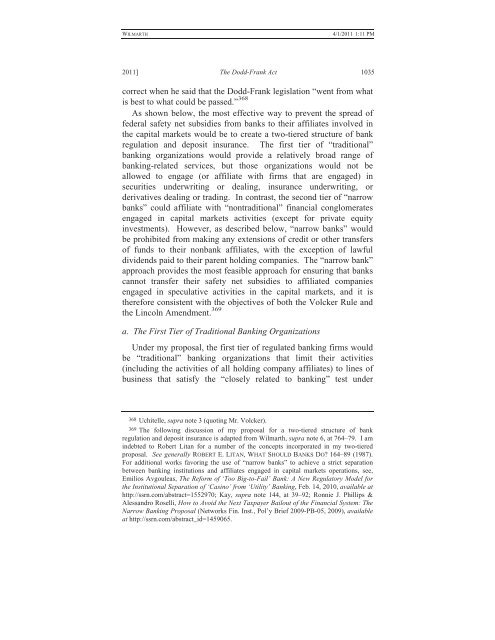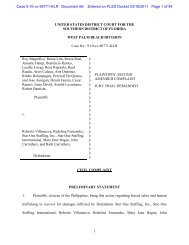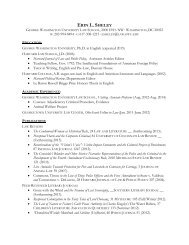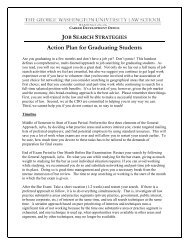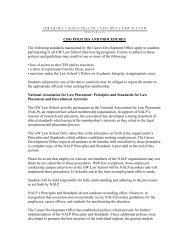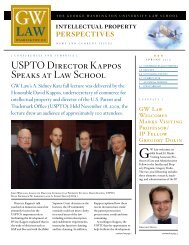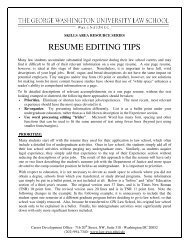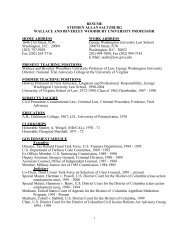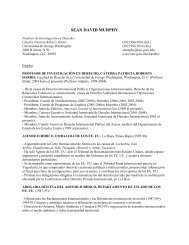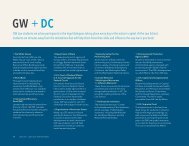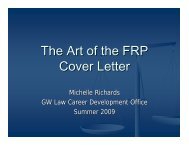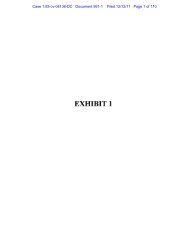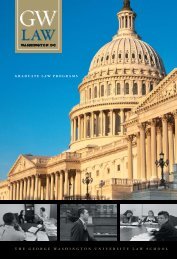CLE Materials for Panel #1 - George Washington University Law ...
CLE Materials for Panel #1 - George Washington University Law ...
CLE Materials for Panel #1 - George Washington University Law ...
Create successful ePaper yourself
Turn your PDF publications into a flip-book with our unique Google optimized e-Paper software.
WILMARTH<br />
4/1/2011 1:11 PM<br />
2011] The Dodd-Frank Act 1035<br />
correct when he said that the Dodd-Frank legislation “went from what<br />
is best to what could be passed.” 368<br />
As shown below, the most effective way to prevent the spread of<br />
federal safety net subsidies from banks to their affiliates involved in<br />
the capital markets would be to create a two-tiered structure of bank<br />
regulation and deposit insurance. The first tier of “traditional”<br />
banking organizations would provide a relatively broad range of<br />
banking-related services, but those organizations would not be<br />
allowed to engage (or affiliate with firms that are engaged) in<br />
securities underwriting or dealing, insurance underwriting, or<br />
derivatives dealing or trading. In contrast, the second tier of “narrow<br />
banks” could affiliate with “nontraditional” financial conglomerates<br />
engaged in capital markets activities (except <strong>for</strong> private equity<br />
investments). However, as described below, “narrow banks” would<br />
be prohibited from making any extensions of credit or other transfers<br />
of funds to their nonbank affiliates, with the exception of lawful<br />
dividends paid to their parent holding companies. The “narrow bank”<br />
approach provides the most feasible approach <strong>for</strong> ensuring that banks<br />
cannot transfer their safety net subsidies to affiliated companies<br />
engaged in speculative activities in the capital markets, and it is<br />
there<strong>for</strong>e consistent with the objectives of both the Volcker Rule and<br />
the Lincoln Amendment. 369<br />
a. The First Tier of Traditional Banking Organizations<br />
Under my proposal, the first tier of regulated banking firms would<br />
be “traditional” banking organizations that limit their activities<br />
(including the activities of all holding company affiliates) to lines of<br />
business that satisfy the “closely related to banking” test under<br />
368 Uchitelle, supra note 3 (quoting Mr. Volcker).<br />
369 The following discussion of my proposal <strong>for</strong> a two-tiered structure of bank<br />
regulation and deposit insurance is adapted from Wilmarth, supra note 6, at 764–79. I am<br />
indebted to Robert Litan <strong>for</strong> a number of the concepts incorporated in my two-tiered<br />
proposal. See generally ROBERT E. LITAN, WHAT SHOULD BANKS DO? 164–89 (1987).<br />
For additional works favoring the use of “narrow banks” to achieve a strict separation<br />
between banking institutions and affiliates engaged in capital markets operations, see,<br />
Emilios Avgouleas, The Re<strong>for</strong>m of ‘Too Big-to-Fail’ Bank: A New Regulatory Model <strong>for</strong><br />
the Institutional Separation of ‘Casino’ from ‘Utility’ Banking, Feb. 14, 2010, available at<br />
http://ssrn.com/abstract=1552970; Kay, supra note 144, at 39–92; Ronnie J. Phillips &<br />
Alessandro Roselli, How to Avoid the Next Taxpayer Bailout of the Financial System: The<br />
Narrow Banking Proposal (Networks Fin. Inst., Pol’y Brief 2009-PB-05, 2009), available<br />
at http://ssrn.com/abstract_id=1459065.


